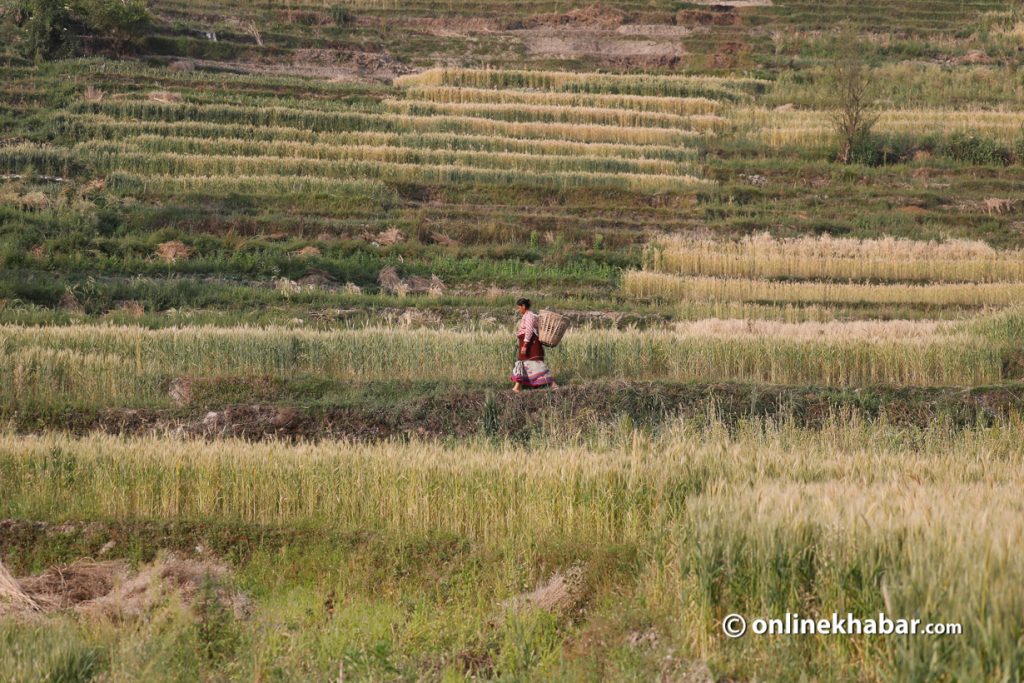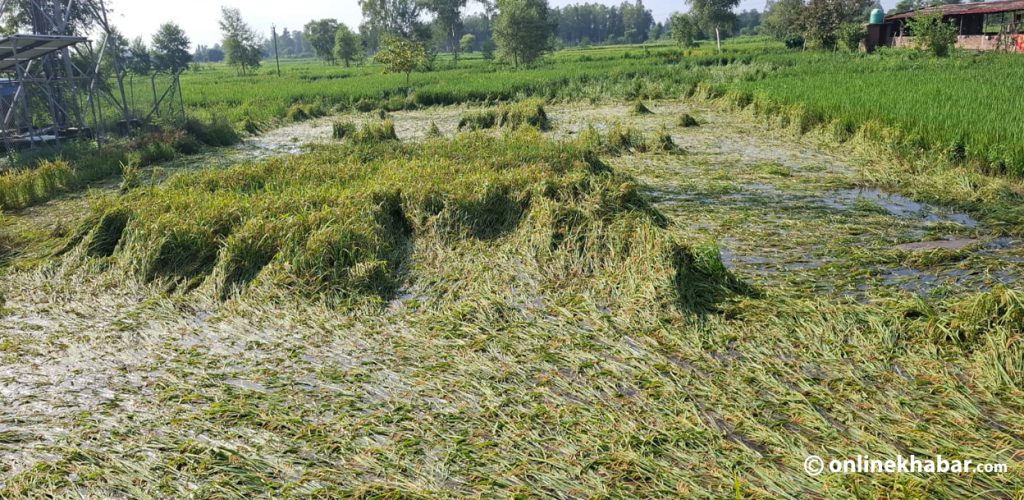Global climate change has a devastating impact on agriculture as it changes rainfall and temperature patterns. This has threatened agricultural production and increased the vulnerability of people dependent on agriculture for their livelihoods. It has affected the world’s developing countries and Nepal is one among them. Climate change not only poses threats to production levels but also disrupts the food supply in the market accordingly as countries like Nepal have failed to internalise the idea of climate-smart agriculture.
In this connection, global bodies working on food security and food sovereignty, such as United Nations’ Food and Agriculture Organization (FAO) and International Fund for Agricultural Development (IFAD), have conducted in-depth research to mitigate climate change’s impact on agriculture with the proposition of climate-smart agriculture, which Nepal can use to combat potential threats to food security.
Climate-smart agriculture

The FAO has released a new approach to combat food security and named it climate-smart agriculture (CSA). It aims to reduce climate change threats by increasing the adaptability of farmers along with enhancing resilience and resource use efficiency in agricultural production systems.
According to the FAO, climate-smart agriculture is an approach for transforming and reorienting agricultural systems to support food security under the new realities of climate change. It promotes coordinated actions by farmers, researchers, the private sector, civil society and policymakers towards climate-resilient pathways through four main action areas—building evidence, increasing local institutional effectiveness, fostering coherence between climate and agricultural policies, and linking climate and agricultural financing.
Meanwhile, climate-smart agriculture differs from business-as-usual approaches as it emphasises the capacity to implement flexible, context-specific solutions, supported by innovative policy and financing actions.
Current context

Climate change scientists Lobell D B, B Schlenker W and Roberts MJ have already concluded that since 1980, climate change has been threatening global crop production, which is in an increasing ratio since then. According to their research, the global production of wheat and maize both decreased by 5.5 per cent and 3.8 per cent respectively, as compared to a counterfactual without the effects of climate change.
T Wheeler and J von Braun, in their 2013 research article published in The Science, reported that by 2050, an additional 2.4 billion people are expected to be living in developing countries, concentrated in South Asia and Sub-Saharan Africa. These are the regions that depend on agriculture for economic growth. Hence, according to their study, by 2050, more than 20 per cent of their population will be facing food insecurity.
Similarly, another report released by IFAD in 2015 calculated that agriculture is the most important income source for about 75 per cent of the population who belong to rural areas in the world and are also poor.
However, in absence of climate-smart agriculture, different practices in agriculture—enteric fermentation, manure deposited on pasture, synthetic fertiliser, paddy rice cultivation and biomass burning, etc—are also contributors to global warming. It is estimated that 5.2 to 5.8 gigatonnes of Co2 and greenhouse gas are produced through such practices, making up more than 10 per cent of global anthropogenic emissions contributing to climate change.
Even though they still account for around 12% of the overall shift, emissions from land-use change are growing less rapidly. Agricultural emissions are projected to rise given the requirement for agricultural expansion to ensure food security. Based on assumptions of traditional agricultural growth trajectories, the primary drivers of expected emission growth may potentially have detrimental effects on ecosystem services including soil protection and biodiversity.
What next?

Raising agricultural productivity and incomes in the smallholder production sector, when compared to the other data, is essential for eradicating poverty and ensuring food security. It also plays a significant role in driving economic transformation and growth in the context of urbanisation and the expansion of non-agricultural industries.
According to FAO projections, in order to keep up with rising demand, the world’s agricultural output will need to increase by 60 per cent by 2050. The majority of this growth will need to come from higher productivity.
The Intergovernmental Panel on Climate Change (IPCC) affirms this, stating that crop production is impacted by climate change in many regions of the world, with negative effects outweighing positive ones more frequently, and that developing nations are particularly vulnerable to additional negative effects.
Several researchers warn of steep decreases in crop productivity when temperatures exceed critical physiological thresholds. Increased climate variability exacerbates production risks and challenges farmers’ coping ability.
Climate change poses a threat to food access for both rural and urban populations by reducing agricultural production and incomes, increasing risks and disrupting markets. Poor producers, the landless and marginalised ethnic groups are particularly vulnerable to its impact.
The impact of extreme climate change can be long-lasting as it increases exposure to risk and uncertainty, which affect investment incentives and reduce the likelihood of effective farm innovations.
Adopting climate-smart agriculture can be a solution to all of these problems in the future.
Conclusion
Climate change alters agricultural production and food systems. Thus, there needs an approach such as climate-smart agriculture to transform agricultural systems to support global food security and poverty reduction.
An integrated, evidence-based and transformative approach to addressing food and climate security at all levels requires coordinated actions from the global to local levels; from research to policies and investments; and across private, public and civil society sectors to achieve the scale and rate of change required.
With the right practices, policies and investments the agriculture sector can move onto climate-smart agriculture pathways, resulting in decreased food insecurity and poverty in the short term while contributing to reducing climate change as a threat to food security over the longer term.


























